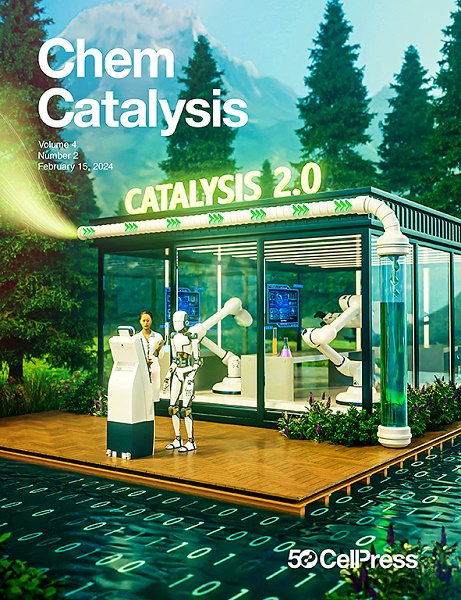通过降低ΔG定制生物催化剂:整合基态不稳定和过渡态稳定
IF 11.6
Q1 CHEMISTRY, PHYSICAL
引用次数: 0
摘要
酶促催化剂因其能够精确控制反应途径、减少能源消耗、最大限度地减少浪费,从而提供卓越的选择性和可持续性,从而使化学工业发生革命性变化的潜力日益得到认可。酶工程,侧重于改造天然酶以满足工业需求,在这一转变中起着关键作用。酶工程的一个关键目标是降低自由能势垒(ΔG‡)。本文将深入探讨为实现这一目标而设计的计算驱动策略。这些策略分为两种不同的方法:基态不稳定(GSD)和过渡态稳定(TSS)。例如,GSD可能涉及重塑氢键网络以提高基态能量,而TSS可以通过调制局部电场来稳定过渡态。GSD策略包括调节底物结合自由能来破坏基态的稳定,重塑氢键网络,并改善结合构象。TSS方法包括调制质子和电子转移,优化局部电场,以及基于过渡态模型修改活性位点。此外,本文还对比了GSD和TSS方法,讨论了它们的计算基础、各自的优势和局限性,以便全面了解它们的应用。最后,我们探讨了技术挑战、新兴技术的影响以及未来研究的方向和趋势。本文章由计算机程序翻译,如有差异,请以英文原文为准。

Customizing biocatalysts by reducing ΔG‡: Integrating ground-state destabilization and transition-state stabilization
Enzymatic catalysts are increasingly recognized for their potential to revolutionize the chemical industry by enabling precise control of reaction pathways, reducing energy consumption, and minimizing waste, thereby offering exceptional selectivity and sustainability. Enzyme engineering, which focuses on modifying natural enzymes to meet industrial needs, plays a pivotal role in this transformation. A key objective of enzyme engineering is to lower the free energy barrier (ΔG‡). This review delves into computationally driven strategies designed to accomplish this objective. These strategies are classified into two distinct approaches: ground-state destabilization (GSD) and transition-state stabilization (TSS). For example, GSD may involve reshaping the hydrogen bonding network to elevate ground state energy, while TSS can stabilize the transition state by modulating local electric fields. GSD strategies involve modulating substrate-binding free energy to destabilize the ground state, reshaping hydrogen bonding networks, and refining binding conformations. TSS methods involve modulating proton and electron transfers, optimizing local electric fields, and modifying active sites based on transition-state models. Furthermore, this review contrasts GSD and TSS approaches, discussing their computational underpinnings, respective advantages, and limitations throughout the text to provide a comprehensive understanding of their applications. Finally, we explore technical challenges, the impact of emerging technologies, and the directions and trends of future research.
求助全文
通过发布文献求助,成功后即可免费获取论文全文。
去求助
来源期刊
CiteScore
10.50
自引率
6.40%
发文量
0
期刊介绍:
Chem Catalysis is a monthly journal that publishes innovative research on fundamental and applied catalysis, providing a platform for researchers across chemistry, chemical engineering, and related fields. It serves as a premier resource for scientists and engineers in academia and industry, covering heterogeneous, homogeneous, and biocatalysis. Emphasizing transformative methods and technologies, the journal aims to advance understanding, introduce novel catalysts, and connect fundamental insights to real-world applications for societal benefit.

 求助内容:
求助内容: 应助结果提醒方式:
应助结果提醒方式:


